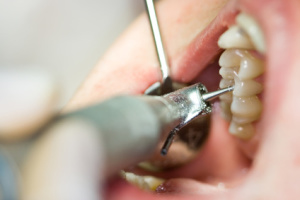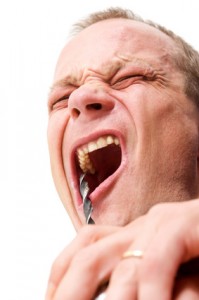 Okay, I understand getting to the dentist when you have an emergency can sometimes be hard. And, yes I realize that it’s awfully tempting to try and fix the problem yourself. But, there are just some things you should not do at home. This brings us to this weeks blog post. The WORST home remedies for dental problems.
Putting garlic against a sore tooth…. Besides making you smell bad, garlic is very potent and can irritate or burn soft tissues around the tooth causing even more pain and sensitivity.
Shaving down a sharp tooth with tools from around the house… Besides the fact that you are putting something that has seen more dirty surfaces than I’d care to mention directly into your mouth, you are putting yourself at risk for damaging the tooth more or slipping and causing damage to your cheeks and gums.
Using crazy glue to fix a broken natural tooth... Yes, I know people say the same stuff that’s in super glue is the same stuff used to seal battlefield wounds, and they’d be correct. However, the stuff used to seal battlefield wounds are made specifically to seal battlefield wounds. Using superglue to fix a tooth most likely will result in 1: You super gluing your finger to your lip, cheek, tooth or some variation of the aforementioned. Or 2: Pain from a tooth with a freshly injured dental nerve being assaulted by a brand of material that was not meant to see the inside of your mouth or to fix broken teeth. Trust me, its not pretty….
Whitening your teeth with lemon juice and baking soda… This one, although its gotten a lot of popularity throughout the years, is just not healthy for your teeth. Mixing an abrasive and an acid together and then scrubbing it on your teeth can cause abrasion to your gums while also removing and/or damaging the enamel on your teeth.
And lastly, searching through your medicine cabinet and finding a left over prescription from those wisdom teeth you (or someone you know) had extracted about ten years ago… Its not a mystery that taking old, expired or another persons prescription medications is a bad idea. Taking one or two remaining capsules of an antibiotic is not only ineffective, it can also help promote bacterial resistance to antibiotics. Also, taking prescription medications that were not prescribed to you can put you right in the middle of an adverse or even allergic reaction to a drug that no one knows you are taking. So if you are having a problem call your dentist or doctor first before resorting to whats left over in the medicine cabinet. Also, whenever you are prescribed medication once you have finished the prescription if there are any tablets remaining they should be disposed of.
So, I’m not saying there are not some things that you can do at home in a pinch to get you by until you can see your dentist. But, in an emergency situation, first and foremost, call your dentist and see when they can see you for an appointment and tell them your emergency. Your dentist will suggest the best way to get you comfortable and safely treated!]]>
Okay, I understand getting to the dentist when you have an emergency can sometimes be hard. And, yes I realize that it’s awfully tempting to try and fix the problem yourself. But, there are just some things you should not do at home. This brings us to this weeks blog post. The WORST home remedies for dental problems.
Putting garlic against a sore tooth…. Besides making you smell bad, garlic is very potent and can irritate or burn soft tissues around the tooth causing even more pain and sensitivity.
Shaving down a sharp tooth with tools from around the house… Besides the fact that you are putting something that has seen more dirty surfaces than I’d care to mention directly into your mouth, you are putting yourself at risk for damaging the tooth more or slipping and causing damage to your cheeks and gums.
Using crazy glue to fix a broken natural tooth... Yes, I know people say the same stuff that’s in super glue is the same stuff used to seal battlefield wounds, and they’d be correct. However, the stuff used to seal battlefield wounds are made specifically to seal battlefield wounds. Using superglue to fix a tooth most likely will result in 1: You super gluing your finger to your lip, cheek, tooth or some variation of the aforementioned. Or 2: Pain from a tooth with a freshly injured dental nerve being assaulted by a brand of material that was not meant to see the inside of your mouth or to fix broken teeth. Trust me, its not pretty….
Whitening your teeth with lemon juice and baking soda… This one, although its gotten a lot of popularity throughout the years, is just not healthy for your teeth. Mixing an abrasive and an acid together and then scrubbing it on your teeth can cause abrasion to your gums while also removing and/or damaging the enamel on your teeth.
And lastly, searching through your medicine cabinet and finding a left over prescription from those wisdom teeth you (or someone you know) had extracted about ten years ago… Its not a mystery that taking old, expired or another persons prescription medications is a bad idea. Taking one or two remaining capsules of an antibiotic is not only ineffective, it can also help promote bacterial resistance to antibiotics. Also, taking prescription medications that were not prescribed to you can put you right in the middle of an adverse or even allergic reaction to a drug that no one knows you are taking. So if you are having a problem call your dentist or doctor first before resorting to whats left over in the medicine cabinet. Also, whenever you are prescribed medication once you have finished the prescription if there are any tablets remaining they should be disposed of.
So, I’m not saying there are not some things that you can do at home in a pinch to get you by until you can see your dentist. But, in an emergency situation, first and foremost, call your dentist and see when they can see you for an appointment and tell them your emergency. Your dentist will suggest the best way to get you comfortable and safely treated!]]>
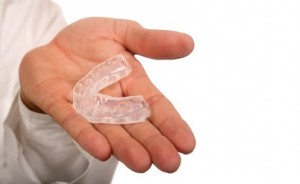 Bruxism can occur during the day or night but for most people occurs at night. This habit can cause significant damage to the teeth and cause discomfort to the structures that hold your jaw and TMJ in place. Although many speculate what causes people to clench and grind often times there is no clear cause for it and may resolve on its own.
Bruxism can occur during the day or night but for most people occurs at night. This habit can cause significant damage to the teeth and cause discomfort to the structures that hold your jaw and TMJ in place. Although many speculate what causes people to clench and grind often times there is no clear cause for it and may resolve on its own.

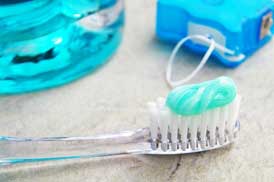
 The studies were spurred on by the increase in consumption of sports and energy drinks, especially by adolescents. The study warned that both sports drinks and energy drinks have pH levels that are at a level of acidity that can cause demineralization or weakening of the enamel. Also, they found that they both contain citric acid, included to help improve the taste and shelf life of the drink, which can also have an effect on enamel. The study showed, that although both sports and energy drinks are acidic enough that if excessively consumed they can cause damage to dental enamel, energy drinks have a “significantly greater potential for enamel dissolution than sports drinks”.
The study also brought to light some interesting information:
The studies were spurred on by the increase in consumption of sports and energy drinks, especially by adolescents. The study warned that both sports drinks and energy drinks have pH levels that are at a level of acidity that can cause demineralization or weakening of the enamel. Also, they found that they both contain citric acid, included to help improve the taste and shelf life of the drink, which can also have an effect on enamel. The study showed, that although both sports and energy drinks are acidic enough that if excessively consumed they can cause damage to dental enamel, energy drinks have a “significantly greater potential for enamel dissolution than sports drinks”.
The study also brought to light some interesting information:
 diagnosed with this sleep disorder but have not sought treatment. And, many do not fully understand exactly what sleep apnea is.
Sleep apnea is a condition where an individual stops breathing for ten seconds or more during sleep. This typically can happen between ten and sixty times in a single night. The two types of sleep apnea are: Obstructive sleep apnea, which is the most common type of apnea; and Central sleep apnea. Obstructive sleep apnea is due to relaxation of the muscles around the throat causing an obstruction of air flow in to the nose and mouth. And, Central sleep apnea is caused by a disruption in the signal from the brain that controls breathing.
Besides not being able to get a good nights rest,
diagnosed with this sleep disorder but have not sought treatment. And, many do not fully understand exactly what sleep apnea is.
Sleep apnea is a condition where an individual stops breathing for ten seconds or more during sleep. This typically can happen between ten and sixty times in a single night. The two types of sleep apnea are: Obstructive sleep apnea, which is the most common type of apnea; and Central sleep apnea. Obstructive sleep apnea is due to relaxation of the muscles around the throat causing an obstruction of air flow in to the nose and mouth. And, Central sleep apnea is caused by a disruption in the signal from the brain that controls breathing.
Besides not being able to get a good nights rest, 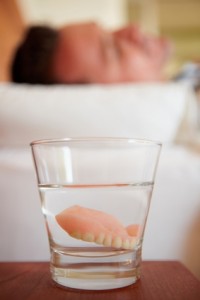

 possible link with bottled water. Some articles have suggested that the increase in bottled water over tap water has decreased the amount of fluoride intake thereby increasing the rate of cavities in children. This statement is not entirely true. Although decreased fluoride intake can increase your susceptibility to cavities it is only one factor in a complex scenario. Also, keep in mind that many bottled water companies do offer water with fluoride in it and also many communities do not have fluoride in their tap water.
Over the years dentistry has focused on preventative care with pediatric patients. We do this by recommending good home care, fluoride use, dental sealants and regular check ups. This is only one piece of the puzzle though. One portion of care that dentists do not get to address thoroughly is a child’s diet. With an increase in high sugar and carbohydrate intake, processed foods, and children with little opportunity to brush their teeth during the day, we are seeing more and more children with cavities at a young age.
Bottled water is not the enemy, as the International Bottled Water Association stated in a recent article, bottled water does not have sugar in it and is a great and healthy alternative to other bottled drinks on the market. Fluoride is just one step to help our children achieve great oral health.
possible link with bottled water. Some articles have suggested that the increase in bottled water over tap water has decreased the amount of fluoride intake thereby increasing the rate of cavities in children. This statement is not entirely true. Although decreased fluoride intake can increase your susceptibility to cavities it is only one factor in a complex scenario. Also, keep in mind that many bottled water companies do offer water with fluoride in it and also many communities do not have fluoride in their tap water.
Over the years dentistry has focused on preventative care with pediatric patients. We do this by recommending good home care, fluoride use, dental sealants and regular check ups. This is only one piece of the puzzle though. One portion of care that dentists do not get to address thoroughly is a child’s diet. With an increase in high sugar and carbohydrate intake, processed foods, and children with little opportunity to brush their teeth during the day, we are seeing more and more children with cavities at a young age.
Bottled water is not the enemy, as the International Bottled Water Association stated in a recent article, bottled water does not have sugar in it and is a great and healthy alternative to other bottled drinks on the market. Fluoride is just one step to help our children achieve great oral health.  effort to keep our patients informed on the most recent dental information we assembled the facts about this study and its findings and our views on dental x-rays.
The study suggests that dental x-rays, particularly when obtained frequently and at a young age, may be associated with an increased risk of an intracranial meningioma. The study compared dental and therapeutic radiation histories in 1433 patients against a control group of 1350 subjects. The study was conducted via telephone interviews with patients and information accrued via patients memory. Due to dental records being held at various offices, researchers were unable to validate the samples history due to time and financial considerations.
effort to keep our patients informed on the most recent dental information we assembled the facts about this study and its findings and our views on dental x-rays.
The study suggests that dental x-rays, particularly when obtained frequently and at a young age, may be associated with an increased risk of an intracranial meningioma. The study compared dental and therapeutic radiation histories in 1433 patients against a control group of 1350 subjects. The study was conducted via telephone interviews with patients and information accrued via patients memory. Due to dental records being held at various offices, researchers were unable to validate the samples history due to time and financial considerations.
 this 2012 baseball season, baseball players, managers, and coaches can not carry tobacco tins or packages in their uniforms any time that patrons are in the ballpark. They also have been restricted from use of smokeless tobacco during any televised interviews or any events where they are in contact with fans. This includes team-sponsored events and autograph signings. This was accomplished by much lobbying by various senators and health groups. Although, they have not banned the use of chewing tobacco during games and events they have been able to make a step in the right direction by eliminating tins and packages.
Smokeless tobacco can have many detrimental dental and overall health effects. Studies have found that between 60-78% of smokeless tobacco users have lesions in their mouths which may or may not be precancerous or cancerous. Besides the risk for oral cancer smokeless tobacco users often have an increased risk of cavities, receding gums and root surface exposure which can increase sensitivity to hot and cold.
According to statistics provided by the organizations lobbying to remove chewing tobacco use in front of baseball fans, they found that “There has been a 36% increase in the use of smokeless tobacco by high school boys since 2003, with 15% of all high school boys using it. The major leaguers who use it during games “are providing a celebrity endorsement for these products” . By decreasing the exposure of our youths to smokeless tobacco, whether it be by the media or by their family and peers, we can help reduce their chances of beginning a harmful habit that can increase their risk for oral cancer.
this 2012 baseball season, baseball players, managers, and coaches can not carry tobacco tins or packages in their uniforms any time that patrons are in the ballpark. They also have been restricted from use of smokeless tobacco during any televised interviews or any events where they are in contact with fans. This includes team-sponsored events and autograph signings. This was accomplished by much lobbying by various senators and health groups. Although, they have not banned the use of chewing tobacco during games and events they have been able to make a step in the right direction by eliminating tins and packages.
Smokeless tobacco can have many detrimental dental and overall health effects. Studies have found that between 60-78% of smokeless tobacco users have lesions in their mouths which may or may not be precancerous or cancerous. Besides the risk for oral cancer smokeless tobacco users often have an increased risk of cavities, receding gums and root surface exposure which can increase sensitivity to hot and cold.
According to statistics provided by the organizations lobbying to remove chewing tobacco use in front of baseball fans, they found that “There has been a 36% increase in the use of smokeless tobacco by high school boys since 2003, with 15% of all high school boys using it. The major leaguers who use it during games “are providing a celebrity endorsement for these products” . By decreasing the exposure of our youths to smokeless tobacco, whether it be by the media or by their family and peers, we can help reduce their chances of beginning a harmful habit that can increase their risk for oral cancer.
